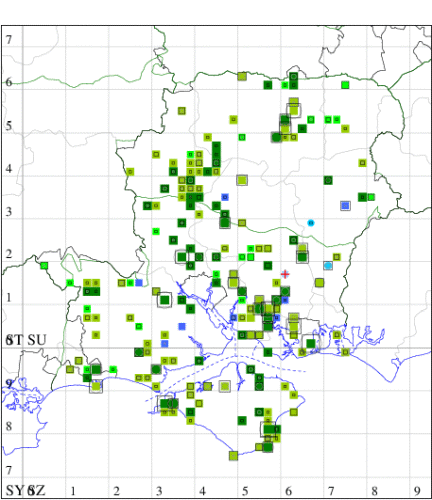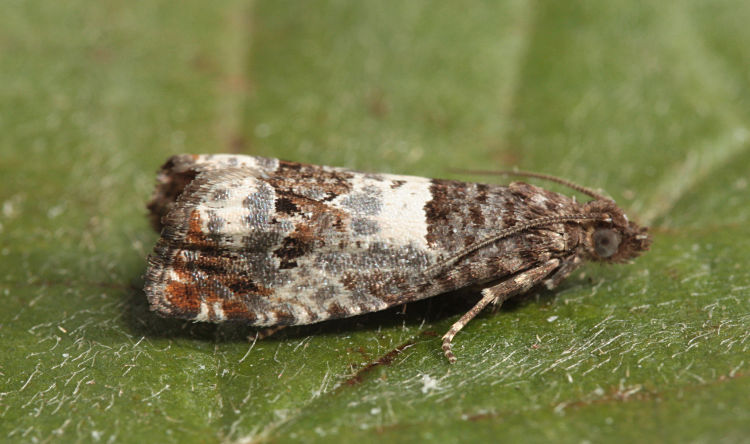Notocelia trimaculana
Checklist Number49.298 [B&F: 1176]
Verification
Record will require further evidence, at least a good photograph, unless CMR is aware recorder has confidence in identification
Classification
| Family: | Tortricidae |
| Subfamily: | Olethreutinae |
| Genus: | Notocelia |
| Species: | trimaculana |
| Authority: | (Haworth, 1811) |
Common in hedgerows, gardens and woodland throughout much of the British Isles. In Hampshire widespread but nowhere common, although the larva feeds on hawthorn, most records are at light. There have been no recent records from the Isle of Wight. Wingspan 15-18 mm. This is one of three closely related and difficult to separate species (see E. rosaecolana and E. roborana). Differs from E. rosaecolana by its generally smaller size and comparatively narrow forewing which is somewhat darker in general coloration and has thicker, less oblique costal strigulae [Bradley]. Larva feeds on Hawthorn, living between leaves and shoots spun together with silk, over-wintering as an egg.


The abundance in each month is indicated as follows:
 No records
No records Very occasional
Very occasional Irregular
Irregular Uncommon
Uncommon Off-peak, but not unusual
Off-peak, but not unusual Off-peak, but not unusual
Off-peak, but not unusual Main flight time
Main flight time| J | F | M | A | M | J | J | A | S | O | N | D | |
|---|---|---|---|---|---|---|---|---|---|---|---|---|
| Adult |  |  |  |  |  |  |  |  |  |  |  |  |
| Larval |  |  |  |  |  |  |  |  |  |  |  |  |




.jpg)
